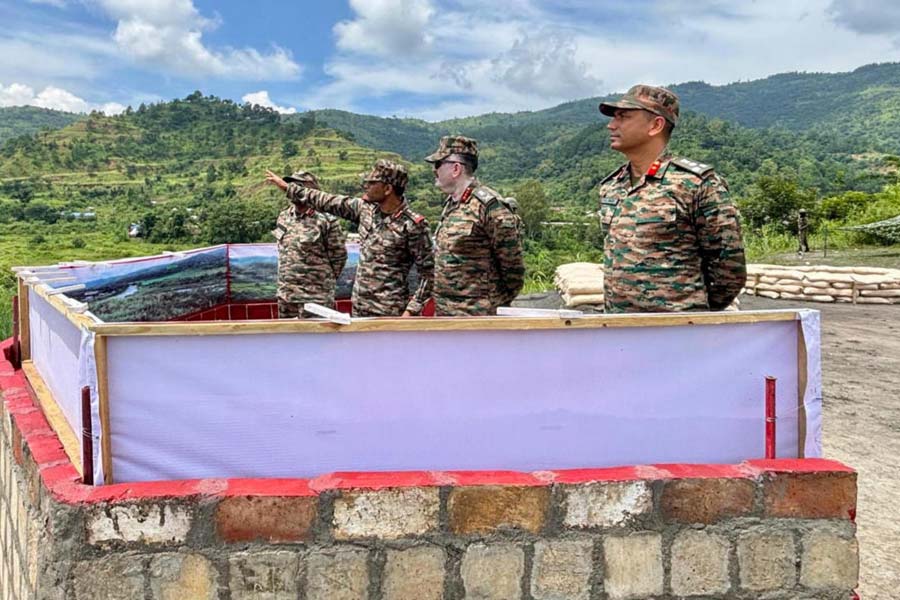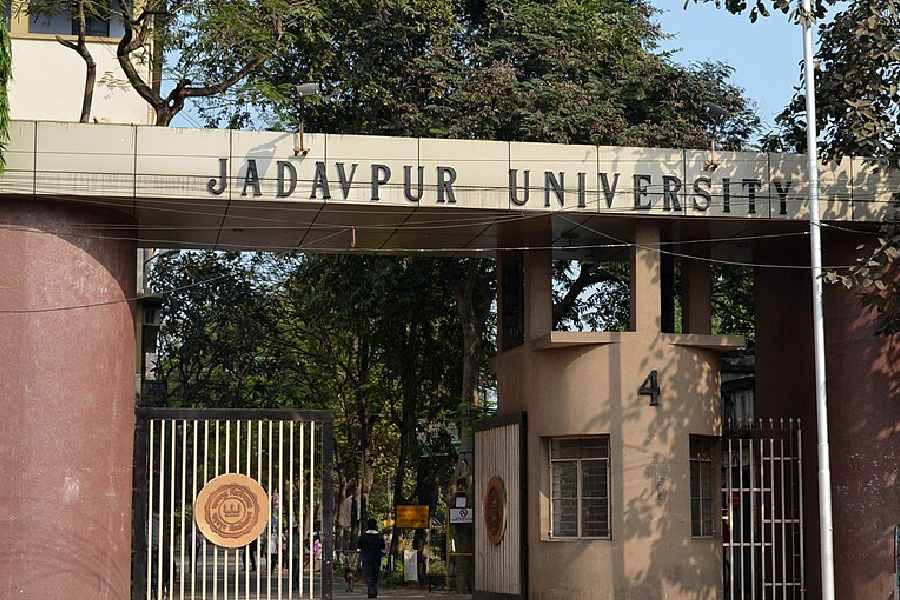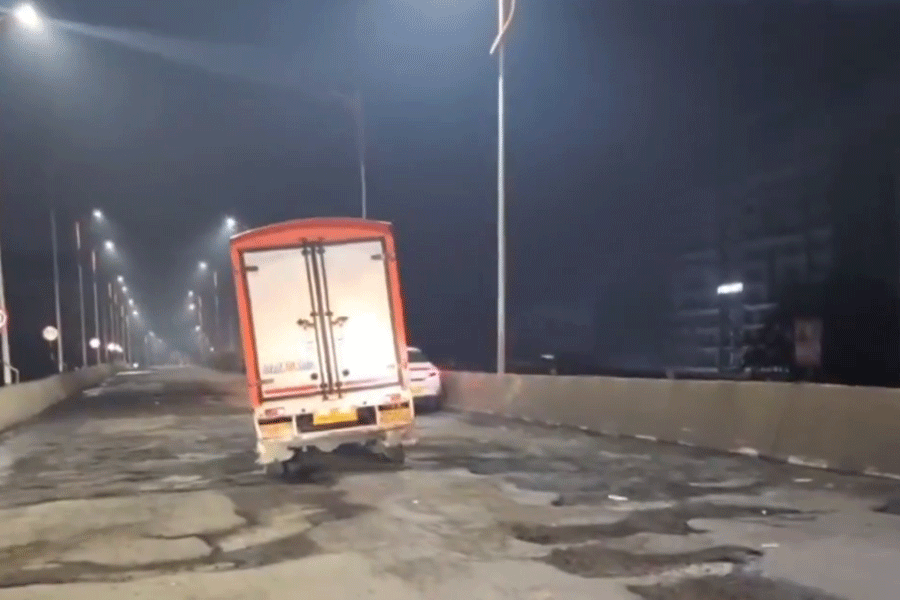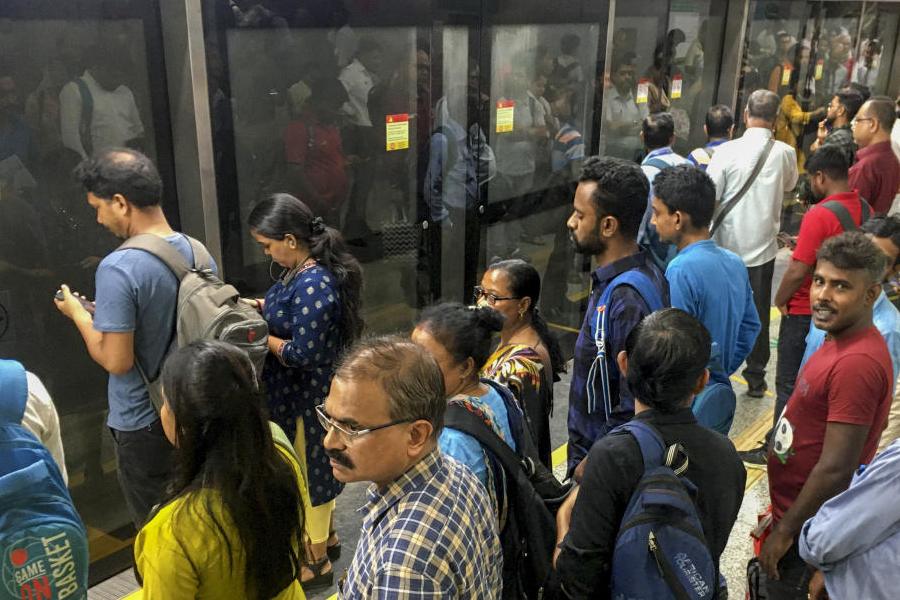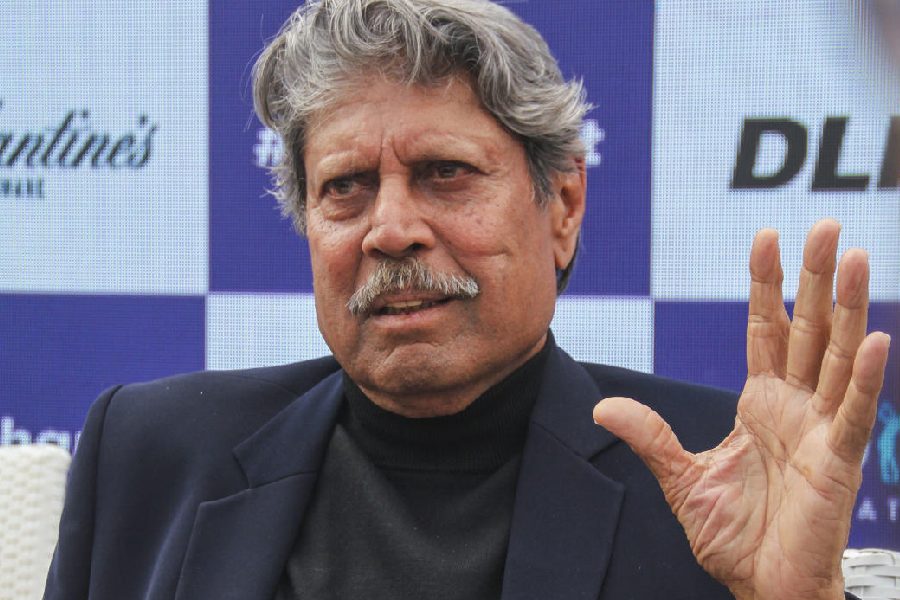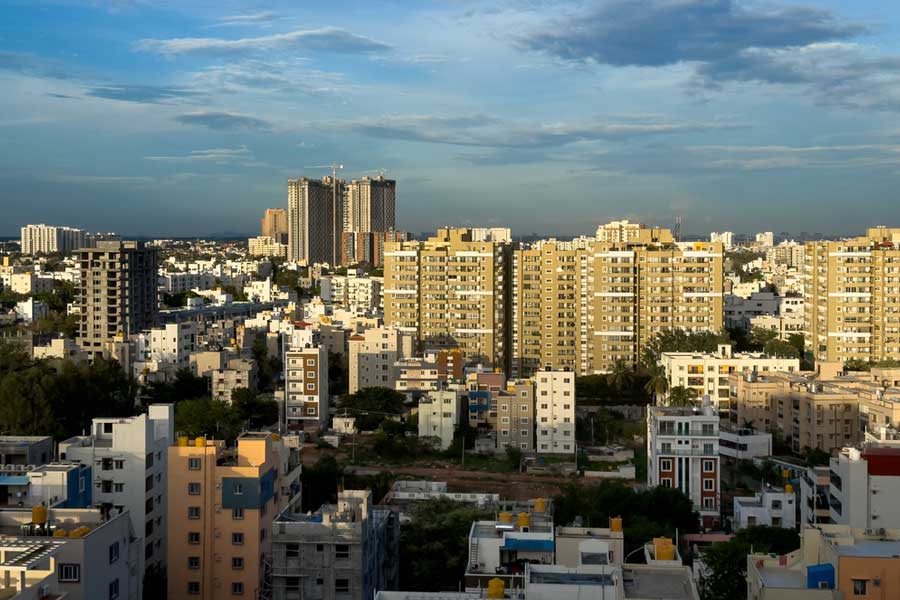 |
| Illustration: Suman Choudhury |
Snotnose points his dirty finger at a signboard on the edge of the pavement. ‘Yahan par haathi rehten hain,’ the rickety hoarding warns. “Itnaaa bara,” the imp continues, dropping his jaw and flailing his arms. Then, his fertile imagination takes over. Huge underground monsters... sleeping during the day... playing at night. “Never come here alone in the dark,” the urchin manages to utter, before succumbing to autosuggestion.
Leaving the three-foot runt to psyche himself into a voluntary bout of seizure, I step off the ITO bridge and amble down the embankment. The descent takes me into the folds of a sleepy slum, lining the dike for a few hundred metres on either side of the eight-lane trans-Yamuna thoroughfare in eastern Delhi. Somehow, the thought of a mammoth presence in these lowly recesses of the nation’s capital seems unreal, even fascinating.
It’s only after another five minutes of scurrying down the slope that I catch a glimpse of Lachchho. Standing on the dry riverbed, oblivious to the groan of motor engines overhead, he munches on sunburnt shrubbery that grows by the water. From time to time, he takes a trunkful of the frothy thing that trickles by the name of Yamuna, and sprays it on his back. In the absence of a better coolant, it suffices.
At 45, Lachchho leads a quiet, reclusive life. The outing by the river ? a routine affair through two-and-a-half decades of his stay there ? is the highpoint of his otherwise mundane, ‘subterranean’ existence. Once in a while, he is joined by friends from other stables for a dip in the stream. There are about 30 of them in the vicinity, united in desolation.
Hard times have come easy for the elephants of the Yamuna, struck with the bane of immobility. Bursting at their seams with an ever-increasing volume of traffic, Delhi’s streets seem to have no place for roadhogs and slowcoaches. And the leviathans qualify as both.
Apart from surfacing at night, with reflectors on their posteriors ? thanks to a Supreme Court judgment ? the elephants are limited to venturing out of their burrows only during the early hours of the morning. Most of these outings are to Okhla, further downstream, where there’s good grass to be found. Carrying back some of the free fodder isn’t a bad idea, since it supplements the more expensive jowar and cane.
Work is drying up for the elephants, too. The shiny Merc finds greater patronage in the city’s wedding processions these days. Invitations do pop in from distant places once in a while. In which case, they travel through odd hours to light up the proceedings of a village baraat. The money ? upto Rs 3,000 at times ? is too good to refuse, even if it means a few sore muscles. But then, such occasions are few and far between.
Once a year, the run-up to the country’s Republic Day celebrations gives them their 15 days of glory. “No payment, though,” says keeper Zakir. “The officials give them food throughout the session. It saves us some money, so we send them.” The temples used to be good clients, Zakir recalls. “But even they prefer to stick to smaller animals for their processions these days.”
There’s talk of the authorities asking the haathiwalle to shift base soon, a stablehand confides, as I run my palm down Bhola’s rough forehead. Yakub Ali has heard it in the air, too. But he, like the others, is clueless about the future. “We can’t even sell them,” he exhales. Bhola responds by gently nudging me with his trunk.
Resurfacing in the upper tiers of urban life, I spot Snotnose once again, wallowing gleefully in the muck. A car with blaring speakers zips past. “I’ll never be your beast of burden,” Rubberlips croons within. I spare a thought for the jumbos, sentenced to collective boredom, and walk away towards the highrises, half-hidden in the haze.





